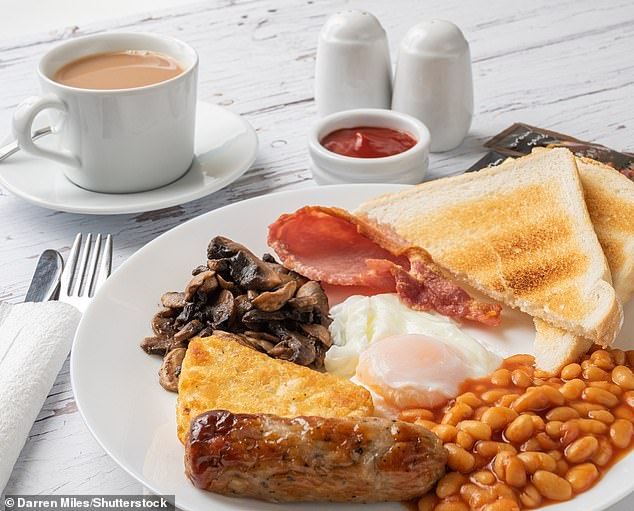
Ketchup vs. Brown Sauce: Scientists Settle Debate with Perfect Full English Breakfast Formula
The Perfect Full English Breakfast: Science Settles the Debate
[Image: A classic Full English breakfast with bacon, eggs, sausage, beans, and toast]
A quintessential British creation, the full English breakfast has been fueling mornings since the Victorian era. This iconic meal—often featuring bacon, sausage, eggs, beans, and toast—rivals fish & chips and roast beef in cultural significance. But what makes the perfect fry-up? Scientists have now weighed in.
The Science of Flavor and Texture
Dr. Nutsuda Sumonsiri, a food science expert at Teesside University, highlights the dish’s balance of sweet, salty, sour, bitter, and umami flavors. Bacon and sausages deliver saltiness, beans and tomatoes add sweetness, grilled tomatoes or sauces contribute acidity, and umami comes from mushrooms and cured meats. The Maillard reaction—the chemical process behind browning—enhances the savory depth of fried elements like sausages and toast.
Eggs, deemed the "centerpiece," should be fried or scrambled for optimal texture. Crispy bacon, grilled tomatoes, and mushrooms are must-haves, while hash browns and black pudding remain optional.
Ketchup vs. Brown Sauce: The Condiment Showdown
Oxford University’s Professor Charles Spence argues tomato ketchup triumphs due to its sweetness and vibrant color, which complements eggs and potatoes. Dr. Sumonsiri agrees but acknowledges brown sauce’s malt vinegar and spices pair well with meats. The verdict? Ketchup wins for visual appeal, but personal preference rules.
Plate Layout Matters
Sausages aren’t just for eating—they’re a strategic "breakwater" to separate beans from eggs, as humorously noted in I’m Alan Partridge. Dr. Sumonsiri advises placing toast away from juicy items to avoid sogginess and positioning eggs atop toast to catch runaway yolk.
[Image: Historical 1957 Heinz ad featuring a fry-up]
A Brief History
While Victorian cookbooks mention fried ham and eggs, the term "full English breakfast" emerged in the 1920s. Initially simplified (bacon, eggs, toast), it expanded post-WWII with beans, mushrooms, and tomatoes. By the 1950s, half of Brits ate cooked breakfasts daily.
What Do the People Want?
A 2017 YouGov poll ranked bacon (89%) as the most essential component, followed by sausages (82%) and toast (73%). Controversial additions include hash browns (60%) and tinned tomatoes (21%). Food critic Stuart Maconie criticizes hash browns as an "American incursion," advocating for traditional bubble and squeak instead.
Regional Twists
Scotland’s version includes haggis and tattie scones, while Wales adds laverbread (seaweed) and cockles.
[Image: Full English breakfast components arranged neatly on a plate]
Healthier Than You Think?
Though calorie-dense, a moderate fry-up offers protein and nutrients. Skipping processed meats or opting for grilled ingredients can make it healthier. Experts argue it may outperform sugary granola, which spikes energy levels briefly before a crash.
In the end, the perfect full English is about balance—both on the plate and in tradition. Whether you side with ketchup or brown sauce, its status as a beloved breakfast ritual remains unshaken.
Key Sources: Dr. Nutsuda Sumonsiri (Teesside University), Professor Charles Spence (Oxford University), YouGov (2017 survey), Historical analysis by Prof. Rebecca Earle (University of Warwick).


